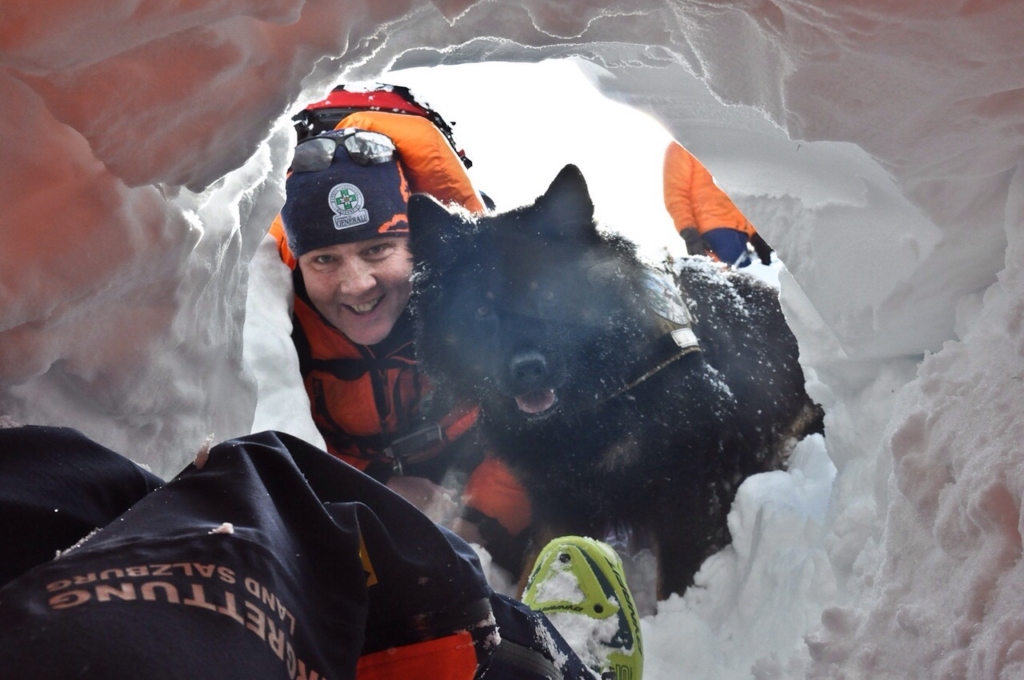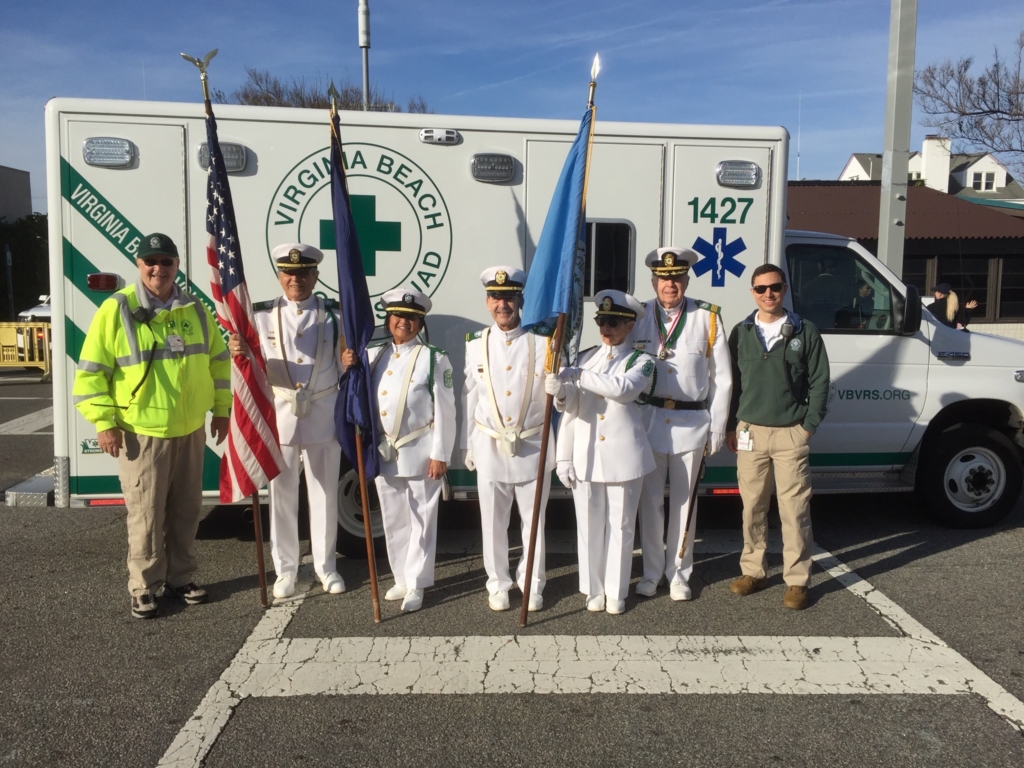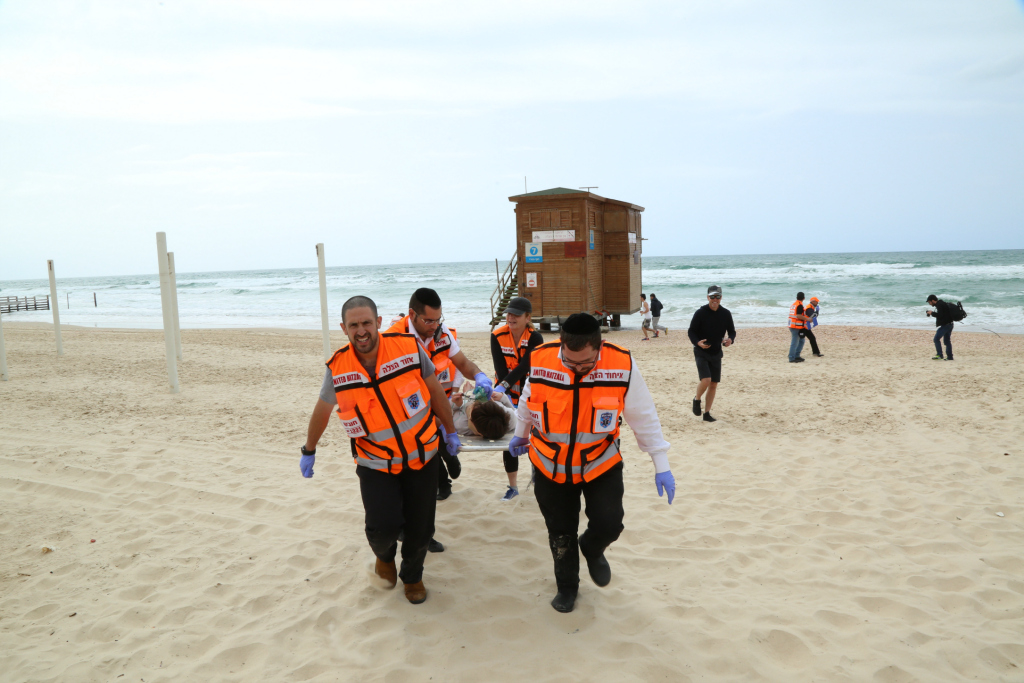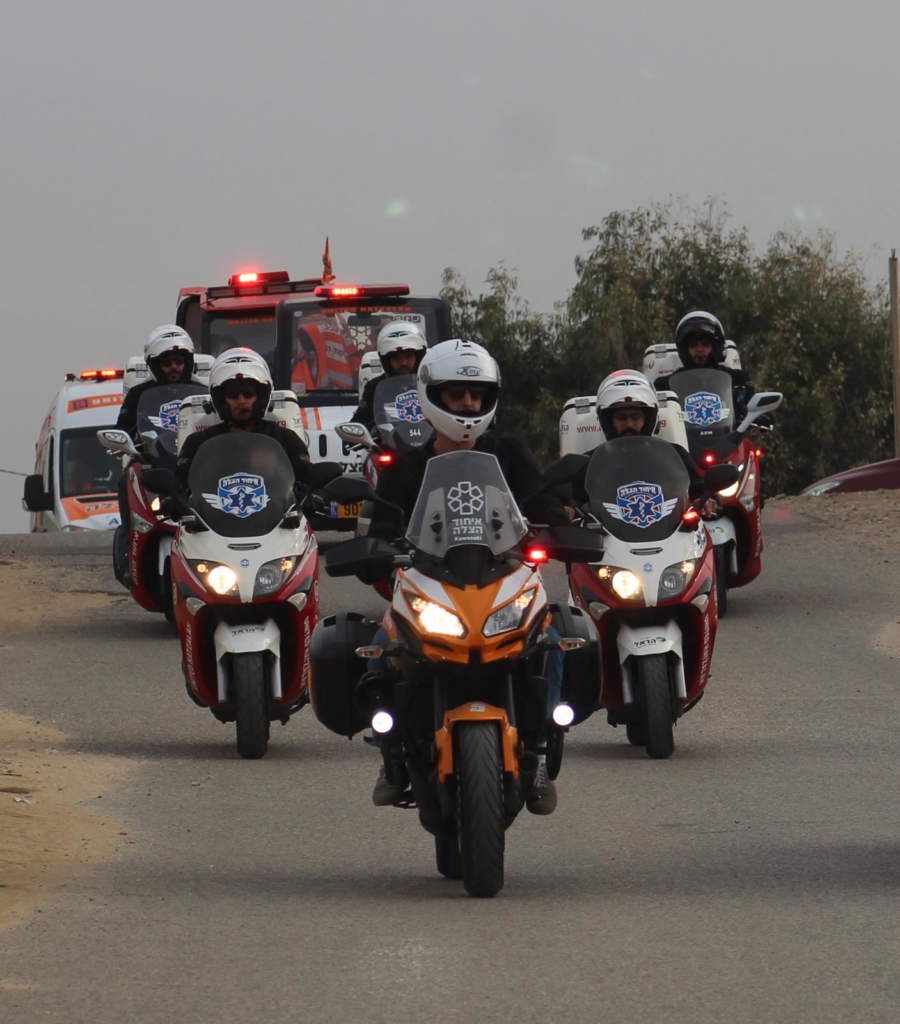EMS for Democracy: Ambulance Volunteers as Cultural Agents of Solidarity
https://chat.whatsapp.com/AmbulanceToday

Published in Ambulance Today, Issue 4, Volume 13, Priceless EMS: The Volunteers At The Heart Of Prehospital Care, Winter 2019
Let’s engage in a thought experiment about EMS financing. Imagine a perfect world for every accountant tasked with balancing the books of every ambulance service across the world. EMS coffers are veritably over owing with money from direct government support, lavish insurance payouts, and philanthropic giving. Each month, the accountants saunter into meetings with formerly despondent service chiefs, spread open their red-lined ledgers, and smile broadly. “Spend away,” they announce in joyous unison. “Spend like there’s no tomorrow!”
In this what-if world, every ambulance station has multiple top-of-the-line service vehicles, the most innovative ALS equipment, and a helicopter or two. In every common room, free donuts pop out of silver dispensers at the push of a button. EMT uniforms are stitched with gold thread. Finally, and most important—at least for this issue of Ambulance Today—unlimited resources make it possible to staff all ambulances entirely with full-time, well-paid professionals. No volunteers.
Would this “ideal” world of fully professionalized emergency medical services be desirable? Or would it erode essential qualities of EMS that we should take care to value, preserve, and enhance?
When volunteers offer their services for free and pledge to serve all patients no matter what their background or condition, they help define their community as bound by ties of underlying humanity rather than in terms of commerce or hierarchical power.
I believe that it would, and that appreciating why can also help us further grasp the role of EMS in a democratic society—the subject of this series of occasional essays.
Let’s consider three justifications for EMS volunteerism and how they might fare in the ideal world of our thought experiment.
The most common reason given for volunteerism is easy to understand, and it’s a good one: it reduces costs.
In many parts of the world today the only feasible way to deliver ambulance services is for some providers to work for free. Even in the first world, cash- strapped rural and suburban counties sometimes face a similar challenge, notably in the United States, with its tradition of local public service financing (for a recent discussion, see the NBC news story “What if you call 911 and nobody comes?”).
We might call this the justification of institutional necessity.
While it’s compelling on the surface, this justification isn’t especially deep. Most important, it doesn’t provide a reason for volunteering that can’t be overridden in flush financial times. In the world of unlimited resources described above, it would provide no reason to use volunteers at all.
What’s worse, the logic of institutional necessity can easily be twisted to justify professional inequity or even exploitation. Just ask any underpaid EMT working today in a for-pro t service. “Sorry, Jack, sorry Jane, we can’t pay you what you’re worth: we just can’t afford it. But thanks for showing up.”
Few organizations reject free labor, especially if it’s provided by well-trained men and women willing to throw themselves into stressful situations and put their own health at risk.
In other words, beware of making necessity a virtue!

So, we might turn to a second justification: EMS volunteerism is commonly hailed for providing volunteers with special career benefits. Volunteering as an EMT is an excellent way for young people to explore the medical field and decide whether a career in medicine is right for them.
It also looks great on a medical school application. Speak with just about any ambulance service that uses volunteers and you’re likely to encounter this worthy line of argument.
Call it the individual justification.
The individual justification is the mirror image of the institutional justification: from its perspective, the benefits of a volunteer system ow not to the ambulance service as an institution but rather to service members.
A host of related arguments fall under this umbrella. For instance, some people assert that volunteering should be encouraged because it offers volunteers a chance to feel pride in contributing to the common good, motivated solely by their values—surely a positive thing.
Yet these justifications don’t provide a reason for volunteering that’s intrinsic to the nature of EMS.
If students think they might be interested in pursuing a career in medicine but wonder whether it’s truly a good fit, it’s of course helpful for them to be able to offer free labor on board an ambulance, but it’s by no means necessary. They could volunteer at a local hospital, or shadow physicians on their rounds.
Similarly, people who wish to reap the personal benefits of volunteering can seek out any number of other volunteer opportunities. Why volunteer for EMS as opposed to a soup kitchen? Or the telephone company? Both provide valuable public goods that one could feel good about delivering.
The individual justification isn’t wrong. It’s simply limited.
Most notably, except in cases when EMS as an institution is inextricable from the individual good sought—for instance, when volunteering helps young people decide whether they would like to pursue a career specifically in ambulance work—the justification wouldn’t carry much weight in a world of unlimited resources.
Should an ambulance service go through the trouble of recruiting, retaining, and managing volunteers simply so that a small group of individuals can advance careers outside of EMS or fulfill their personal sense of ethics—which they also could do in any number of other ways?
Armed only with the individual justification, leaders of EMS organizations balancing the costs and benefits of volunteers would surely opt for institutional efficiency: staffing ambulances solely with full-time professionals.

Finally, there’s a third type of justification, one that’s neither institutional nor individual. Instead, it is social. It justifies the use of volunteers within EMS because they advance the common good by fostering public health.
At first glance, this common-good-as- public-health justification might seem the most unassailable of the three. Surely any practice that advances the public health should be encouraged!
But to see why this argument for EMS volunteerism would likewise fall in our what-if world, we can ask ourselves a question: What public health goods do EMS volunteers advance distinct from those which EMS can supply without them?
Obviously, EMS provides enormous benefits to individuals and society.
But to argue that the use of volunteers in EMS should be supported because volunteers advance the individual and collective interests that EMS can meet without volunteers is essentially to raise the institutional justification: volunteering is good because EMS is good and volunteers can effectively help EMS fulfill its mission.
This is true, and it’s a worthy view, but it wouldn’t get us far in our thought experiment.
There is, however, a variation on the social justification that fares much better: the civic justification.
The civic justification argues that EMS volunteerism benefits the common good defined as the political life of a community—using the broadest sense of the term political.
In making this argument, this justification posits that the public benefits of EMS volunteerism are at once (1) separate from the primary goods provided by the ambulance service, because they can be provided best, or perhaps only, through the use of volunteers; and (2) unique to EMS, or nearly unique, because they are intimately connected to the character of emergency medical services as a social practice.
Put another way: the civic justification suggests that volunteers in EMS provide important public benefits that can’t be provided by paid professionals, and that something about the nature of EMS makes it especially well suited to provide those goods.
What public benefit does EMS volunteerism advance, unique to EMS, other than the public health? In a phrase: it contributes in unique ways to the culture of democratic solidarity.

To appreciate why, we need to add another term into our discussion: civil society.
Civil society consists of those myriad social institutions that are distinct from government, the family, and the marketplace. Religious organizations, sports clubs, social reform movements, political advocacy groups—these institutions lie at the heart of liberal democratic life.
They are sometimes said to “mediate” between the family, an institution devoted to highly particular interests, and the state, which is devoted to the universal interests of the public as a whole.
Healthy democratic societies are like a vegetable soup chock-full of such institutions—they come in every flavor. Yet their magic lies in how, in their very diversity of interests, they contribute to social cohesion.
They do so by creating ties of affection between their members as they pursue common ends, while also encouraging them to understand their activities in broad community terms.
Indeed, historians and sociologists tell us, civil society institutions also ultimately tend to foster a common national identity—an essential value for democratic societies seeking to accomplish collective goals.
EMS volunteer groups are civil society institutions in all the usual, classic respects. They are neither the family (families call EMS precisely when they are no longer capable of assisting one of their members), nor are they agents of the state.
They lie midway along the continuum of particularity and universality. They bring people together in pursuit of common interests. They contribute to social solidarity in the same ways that most other civil society institutions do.
Yet volunteering for EMS is different from contributing labor to other civil society organizations, even ones dedicated to fully public-regarding ideals. There is something about EMS that makes the way it contributes to social solidarity unique and essential.
What is it?
In my first article for this series, I described the siren of an ambulance as having both an instrumental value—to clear the road—and, less appreciated, a cultural value: it’s a signal that the most basic duty of the state is being fulfilled. Volunteers within EMS serve a related cultural signalling function.

Most importantly, when EMS volunteers are identified as volunteers, they signal to the people they serve that their community is characterized by a spirit of mutual interdependence and popular sovereignty.
By appearing on scene, they announce that their patients live in a world in which people literally take care of each other, down to the core of their physical being, and in which residents are active participants in governing themselves.
In the language of contemporary social criticism, volunteers convey an empowering, even liberating vision of “bio-politics”—a way of organizing society that fosters independent, self-sufficient community self-care.
This cultural signalling can be undertaken best, and perhaps only, through the work of volunteers. The lack of financial compensation within volunteer EMS organizations differentiates them from both the marketplace and the state.
When volunteers offer their services for free and pledge to serve all patients no matter what their background or condition, they help define their community as bound by ties of underlying humanity rather than in terms of commerce or hierarchical power.
EMS is uniquely well-suited as a field to provide this cultural signal because of the nature of its core work: safeguarding individual life in emergency situations.
EMS can be contrasted in this respect with the military, the police, and the re service, all three of which are also central to a well-functioning society, involve significant personal sacrifice, and are closely associated with EMS by ties of friendship. Unlike the military, for instance, EMS is devoted entirely to saving life, never to taking it.
In addition, the military is directed outward, toward securing the territorial integrity of a country, rather than inward, as is EMS (when a country’s military force is directed inward, to quash a domestic insurrection, the foundations of the society are rocked).

EMS personnel also differ fundamentally from their brothers and sisters in the police force, even while they may rely upon one another in the field.
Most importantly, EMS is non-normative and non-coercive: we don’t judge our patients, we don’t carry guns, and we generally won’t transport people against their will. When police respond to an emergency, someone is likely to face the consequences of having done something criminally wrong.
EMS most resembles the fire service, which is likewise devoted to non-normative, non-coercive, ameliorative activity. Yet there is a subtle but important difference between the two groups.
As a public service, fighting fires is justified in large part because one burning building poses a threat to other buildings around it. It wasn’t long ago that a burning building could set an entire town ablaze.
The social justification for the ambulance service is much less communal. Patients receive treatment almost entirely because they are viewed as morally worthy of care in themselves.
Nobody is concerned that unless a medic attends to Jim’s basilar skull fracture it will spread to Janet. EMS is dedicated to saving individual life, in other words, without regard to whether a patient’s chief complaint implicates the community at large.
These characteristics make volunteer ambulance services especially potent signals of civic solidarity. In providing life-saving care to individuals simply as human beings, and in taking up the responsibility of doing so personally, they communicate the cultural ideals that make healthy democratic societies work.
It’s for this reason that they are worthy objects of community pride: they lie at the heart of what community means in the first place.
In turn, volunteer EMS programs suggest that as civil society institutions, they would be justified even in the financially flush times of our thought experiment.
They would be justified not simply because they lower institutional costs, enable individuals to explore their careers and fulfill their ethical obligations, and foster public health—all of which are worthy goods—but also, at their core, because they are culturally irreplaceable and essential.
A final thought. Across the world today, liberal democratic societies are being driven by an anti-elite politics that collectively goes under the name of populism.
These politics take different forms in different places, and readers of this magazine will naturally have many contrasting views about populist political movements and the individuals who lead them, both for and against.
But there is one aspect of all such movements upon which everyone can agree: They are driven by a feeling and a rhetoric of existential threat.
In advanced industrial democracies, most notably, a significant portion of the electorate has come to understand that it has been politically abandoned.
Its members fear that, in an underlying, implicit, often unspoken way, they are dying, or at the risk of it, both as individuals and communities, and they resent that the establishment has turned its back on them.
What we have witnessed on the world stage in recent years are the political consequences of a massive breakdown of social solidarity.
The causes need not concern us here—they are well outside the scope of EMS. But the remedies should, because at least one of them does lie within our scope.
Whenever an ambulance shows up at a door—especially when the man or woman stepping from the vehicle provides their services for free—it announces that society has yet to fracture into a million little pieces under the pressures of market competition; that people are still motivated by love and community as much as by personal profit; and that strangers will give their time and risk their health and, in the deployment of their skills, tell a suffering fellow citizen, in essence: “You are not forgotten. We will take care of you. Your community is here.”
This is not to say that EMS should add the repair of social bonds in a fractured world to its mission.
It is to say that it is something we do already, both as volunteers and as full-time professionals, and that it therefore would be worth our time to think about this aspect of our work more carefully and systematically than we already do. Doing so might help us inform our practice and support our advocacy.
The four interviews accompanying this essay are meant to contribute to this conversation. They ask questions of EMS representatives in four countries with different volunteer traditions, providing a spectrum of opinion and experience—and food for thought.
Interview #1 with Capt. Dale Drescher of the Virginia Beach Volunteer Rescue Squad
Interview #2 with Dr. Joachim Schiefer of the Austrian Mountain Rescue Services (SDMA)
Interview #3 with Eli Beer, Founder & President of Israel’s United Hatzalah
Interview #4 with Magnus Andersson Hagiwara, Ph.D. from the Centre for Prehospital Research at Sweden’s University of Borås
In a forthcoming article for this series, I will consider a subject intimately related to this one: the cultural status of EMS and its representation in popular media. If you have thoughts about the issue, I hope you will reach out to me via email or social media.
To receive more exclusive content from Ambulance Today directly to your smart phone, join us now on: https://chat.whatsapp.com/AmbulanceToday
Mark S. Weiner, J.D., Ph.D., EMT-B, volunteers for the Seymour Ambulance Association in Connecticut, USA. He is the author of The Rule of the Clan: What an Ancient Form of Social Organization Reveals about the Future of Individual Freedom (Farrar, Straus and Giroux, 2013), winner of the Grawemeyer Award for Ideas Improving World Order.
Quality content
- Casinos Not On Gamstop
- Casinos Not On Gamstop
- Casino Sites Not On Gamstop
- Non Gamstop Casino
- UK Online Casinos Not On Gamstop
- Casino Sites Not On Gamstop UK
- Casino Sites Not On Gamstop
- Games Not On Gamstop
- Sites Not On Gamstop
- UK Online Casinos Not On Gamstop
- Casino Not On Gamstop
- Slots Not On Gamstop
- Casino Not On Gamstop
- Gambling Not On Gamstop
- Casinos Not On Gamstop
- Non Gamstop Casino
- UK Online Casinos Not On Gamstop
- Casino Sites Not On Gamstop
- Best Betting Sites
- Best UK Online Casinos
- New Horse Racing Betting Sites





Leave a Reply
Want to join the discussion?Feel free to contribute!